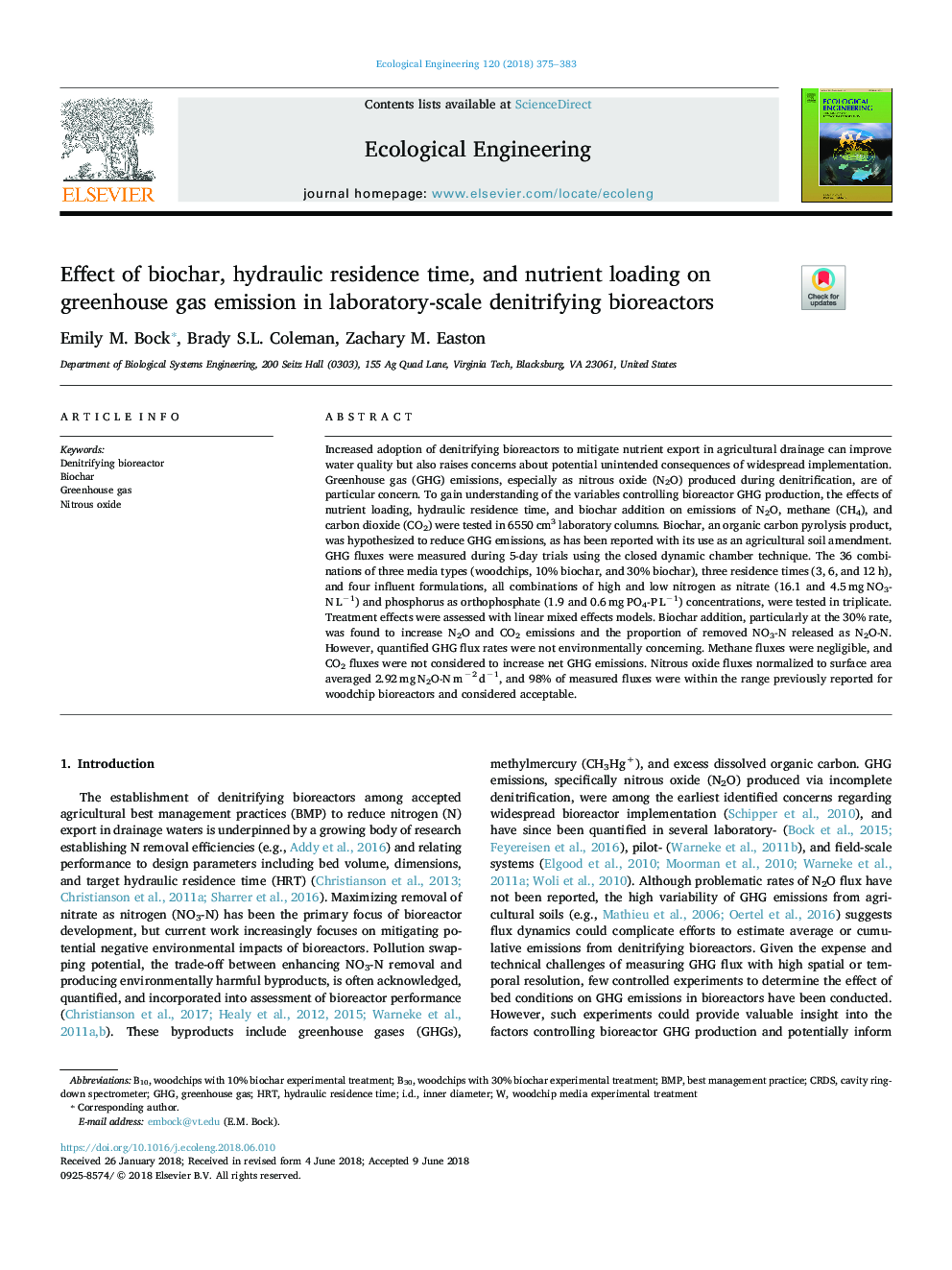| Article ID | Journal | Published Year | Pages | File Type |
|---|---|---|---|---|
| 8847820 | Ecological Engineering | 2018 | 9 Pages |
Abstract
Increased adoption of denitrifying bioreactors to mitigate nutrient export in agricultural drainage can improve water quality but also raises concerns about potential unintended consequences of widespread implementation. Greenhouse gas (GHG) emissions, especially as nitrous oxide (N2O) produced during denitrification, are of particular concern. To gain understanding of the variables controlling bioreactor GHG production, the effects of nutrient loading, hydraulic residence time, and biochar addition on emissions of N2O, methane (CH4), and carbon dioxide (CO2) were tested in 6550â¯cm3 laboratory columns. Biochar, an organic carbon pyrolysis product, was hypothesized to reduce GHG emissions, as has been reported with its use as an agricultural soil amendment. GHG fluxes were measured during 5-day trials using the closed dynamic chamber technique. The 36 combinations of three media types (woodchips, 10% biochar, and 30% biochar), three residence times (3, 6, and 12â¯h), and four influent formulations, all combinations of high and low nitrogen as nitrate (16.1 and 4.5â¯mgâ¯NO3-Nâ¯Lâ1) and phosphorus as orthophosphate (1.9 and 0.6â¯mgâ¯PO4-Pâ¯Lâ1) concentrations, were tested in triplicate. Treatment effects were assessed with linear mixed effects models. Biochar addition, particularly at the 30% rate, was found to increase N2O and CO2 emissions and the proportion of removed NO3-N released as N2O-N. However, quantified GHG flux rates were not environmentally concerning. Methane fluxes were negligible, and CO2 fluxes were not considered to increase net GHG emissions. Nitrous oxide fluxes normalized to surface area averaged 2.92â¯mgâ¯N2O-Nâ¯mâ2â¯dâ1, and 98% of measured fluxes were within the range previously reported for woodchip bioreactors and considered acceptable.
Keywords
Related Topics
Life Sciences
Agricultural and Biological Sciences
Ecology, Evolution, Behavior and Systematics
Authors
Emily M. Bock, Brady S.L. Coleman, Zachary M. Easton,
